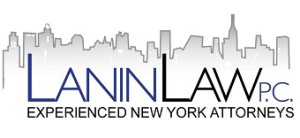NY Times Reports That ARMs Are Still Popular Despite Being At Heart Of Mortgage Crisis
The NY Times has an interesting article on ARMs today . . .
Why Borrowers Still Like ARMs
By BOB TEDESCHI
Published: March 21, 2008
MANY borrowers still seek adjustable-rate mortgages, but after the upheavals in the market in the last year, finding them isn’t easy.
“ARM market? What ARM market?†said Jeffrey Guarino, the managing director of Gotham Capital Mortgage, a New York brokerage company. In the early part of March, Mr. Guarino said, “it dried up.â€
Investors are still buying fixed-rate mortgages from lenders, Mr. Guarino said, but adjustable-rate loans have generated much less demand, thereby greatly reducing the number of lenders with ARMs to offer.
Thrift institutions, like Astoria Federal Savings and Ridgewood Savings, he said, have been an exception, since they frequently hold loans in their own portfolios and so do not have to worry about finding investors to buy them.
Monte N. Redman, president of Astoria Federal, said that the company was offering ARMs with interest fixed at 5 3/8 percent for five years. (After that, rates will be reset each year.)
“Our appetite for these has not diminished at all,†Mr. Redman said.
And since rates on ARMs have dropped in the last nine months, anywhere from one-half of one percentage point to three-quarters of a percentage point, “we’ve also not seen a decrease in the appetite among consumers,†he said.
ARMs for prime borrowers usually feature interest rates that are fixed for five to 10 years before adjusting to the prevailing rates.
The ARM’s reputation was first tarnished largely because of high delinquency rates among borrowers with poor credit who took out such mortgages during the recent real estate boom. Now a growing number of borrowers with good credit have also failed to keep pace with their ARMs.
According to a report earlier this month by the Mortgage Bankers Association, 1.06 percent of prime borrowers with ARMs entered the foreclosure process in recent months, compared with 0.41 percent in late 2006. In New York State, 2.3 percent of its 218,000 prime ARMs were in foreclosure in the fourth quarter of 2007, compared with 1.05 percent a year earlier.
Mr. Redman said his company, which lends to borrowers across the nation, had avoided such increases mostly by limiting loans to borrowers who demonstrate an ability to repay. Equity requirements are strict: 25 percent down payments for loans under $500,000 and 30 percent for those of $500,000 or more.
Ellen Bitton, chief executive of the Park Avenue Mortgage Group, based in Manhattan, said that most of her affluent borrowers are choosing “interest only†ARMs. With these loans, borrowers make no principal payments for a fixed number of years; after that, their interest rates are adjusted as they pay both interest and principal.
“Many of these borrowers feel like they won’t be in their properties longer than, say, 10 years, and they’re still hooked on the low payments,†Ms. Bitton said.
With interest-only loans frequently being offered at around 5 percent, Ms. Bitton added, the difference in monthly payments can be significant: about $500 a month on a $1 million mortgage.
Regardless of the risks and reputation, American borrowers have continued to seek out ARMs, just like their counterparts in other parts of the world, said Jay Brinkmann, the vice president for research and economics at the mortgage bankers’ group.
He cited England as an example. A few years ago, lenders there explored ways to sell borrowers on the merits of long-term fixed-rate mortgages because so much investment money was flowing to banks in the United States.
“They concluded nothing much could be done,†Mr. Brinkmann said. “Borrowers just wanted the lowest payments they could find.â€
